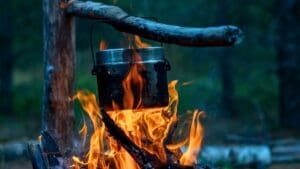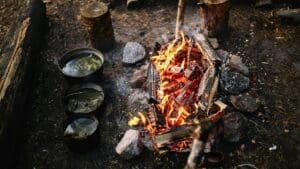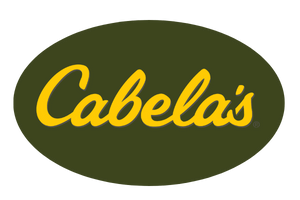How to Build the Perfect Cooking Fire in the Wilderness
Cooking over an open fire in the wilderness is one of the most rewarding experiences you can have in the outdoors. It connects us to ancient traditions, provides nourishment after a long day of adventuring, and creates a warm gathering place under the stars. But building the perfect cooking fire isn’t just about striking a match and throwing on some logs. It requires knowledge of fire structure, wood selection, airflow, safety, and cooking methods. Done right, your fire becomes a tool as well as a source of comfort. This guide will walk you through everything you need to know to create the perfect cooking fire in the backcountry.
Why Fire Matters in Wilderness Cooking
When you cook outdoors, the fire becomes your stove, oven, and grill all in one. Unlike modern appliances, which offer precise temperature control, a wilderness fire requires you to manage heat through technique and observation. A well-built cooking fire can mean the difference between a meal that’s smoky and half-raw versus one that’s golden, tender, and delicious. Beyond the practical benefits, fire also provides atmosphere and a sense of security. Gathering around flames to prepare and share food is one of humanity’s oldest rituals, and it continues to bring people together in the wilderness today.
Fire Safety Comes First
Before building any fire, you need to think about safety. A poorly planned fire can cause wildfires, injuries, or damage to fragile ecosystems. Always follow Leave No Trace principles and local regulations. If fires are prohibited due to drought or fire risk, respect the ban and use a camp stove instead. When fires are allowed, follow these guidelines:
- Clear a space of at least 10 feet in diameter, free of dry grass, leaves, or overhanging branches.
- Use established fire rings whenever possible instead of creating new scars on the land.
- Keep a bucket of water and a shovel nearby for emergencies.
- Never leave a fire unattended, even for a short time.
- Fully extinguish the fire with water, stirring the ashes until they are cold to the touch.
Safety is the foundation of fire-building. Once you establish that, you can focus on creating a fire optimized for cooking.
Choosing the Right Wood
Not all wood burns the same. For cooking, you want a steady, even heat without too much smoke. Here’s a breakdown:
Hardwoods
Oak, maple, hickory, and ash are excellent choices for cooking fires. They burn hot, produce long-lasting coals, and create a consistent heat source. If you’re camping in areas where hardwood is available, this is your best bet.
Softwoods
Pine, spruce, and fir ignite quickly and are useful for kindling. However, they burn fast and produce resinous smoke, which can give food an unpleasant taste if overused. Use softwoods primarily for starting your fire, then switch to hardwoods for cooking.
Dead and Dry Wood
Never cut live trees for firewood. Instead, look for downed branches and logs that are dry and seasoned. Green wood hisses, smokes excessively, and produces poor coals. The rule of thumb: dry wood snaps, while green wood bends.
Types of Cooking Fires
The structure of your fire determines how it burns and how suitable it is for cooking. Different fire lays serve different purposes:
1. Teepee Fire
Constructed by leaning sticks together in a cone shape, the teepee fire ignites quickly and produces fast flames. It’s excellent for boiling water or quick cooking, but it doesn’t produce long-lasting coals. Use this style at the start to get your fire going.
2. Log Cabin Fire
This structure involves stacking logs in a square pattern, alternating directions like Lincoln Logs. It allows for airflow and creates a steady burn. A log cabin fire generates good coals and is useful for grilling or roasting.
3. Lean-To Fire
A lean-to fire uses a large log as a windbreak, with smaller sticks leaning against it at an angle. It’s reliable in windy conditions and provides a stable cooking surface when coals build up against the log.
4. Star Fire
In this method, long logs are arranged like spokes radiating from a central point. As the ends burn, you push them inward. Star fires are efficient for conserving wood and ideal for longer cooking sessions.
5. Dakota Fire Hole
This advanced technique involves digging two holes connected by a tunnel: one for the fire, one for airflow. The result is a smokeless, highly efficient fire that produces concentrated heat. It’s excellent for cooking discreetly and conserving fuel.
Managing Heat for Cooking
Cooking over fire requires learning how to manage heat zones. Unlike a stove, you don’t adjust a dial — you move your food closer or farther from the heat source. Here’s how:
Direct Heat
This is right over the flames. It’s best for boiling water or quickly searing meat, but it can burn food if you’re not careful.
Coal Cooking
Once flames die down, glowing coals provide steady, even heat. This is the sweet spot for grilling, roasting, and baking in foil packets.
Heat Zones
Build your fire so one side has more coals than the other. This creates a high-heat zone and a low-heat zone, giving you control similar to a stovetop with multiple burners.
Cooking Surfaces
Rocks, flat logs, or grill grates placed over the fire create stable surfaces. You can also use skewers, sticks, or cast iron pans depending on your setup.
Cooking Techniques Over Fire
Once your fire is burning properly, you can explore different cooking methods:
Grilling
Place meat or vegetables directly on a grill grate over coals. This creates classic smoky flavors and char marks.
Foil Packet Cooking
Wrap ingredients in foil and place them in the coals. Potatoes, fish, and vegetables cook beautifully this way.
Skewer Cooking
Spearing meat or vegetables on sticks and roasting them over flames is one of the simplest and most ancient methods. Just rotate frequently to prevent burning.
Cast Iron Cooking
A cast iron skillet or Dutch oven opens endless possibilities: stews, breads, pancakes, or even pizza. Cast iron retains heat well and is nearly indestructible in camp settings.
Stone Cooking
Heat flat stones in the fire, then place food directly on the stone. This technique works for flatbreads, eggs, or fish fillets.
Common Mistakes and How to Avoid Them
Many campers struggle with cooking fires because they rush or overlook key details. Here are mistakes to avoid:
- Using wet or green wood — it creates too much smoke and poor heat.
- Cooking over flames instead of coals — flames burn food unevenly.
- Building too big a fire — large fires are hard to control for cooking.
- Neglecting safety — always keep water nearby and extinguish thoroughly.
- Forgetting airflow — smothered fires produce smoke instead of heat.
Patience is key. Take time to build the fire properly and let it develop a strong bed of coals before cooking.
The Ritual and Atmosphere of Fire Cooking
Beyond practicality, there’s something deeply human about cooking over fire. The crackle of logs, the glow of embers, and the aroma of food combine to create atmosphere unlike any other. Meals taste better not just because of smoke and flame, but because of the effort and ritual involved. Sharing a fire-cooked meal builds bonds, creates stories, and becomes a highlight of any wilderness trip.
Advanced Fire-Building Skills
Once you’ve mastered the basics, you can explore advanced skills to elevate your wilderness cooking:
Baking in the Backcountry
With a Dutch oven or even by burying food in coals, you can bake bread, biscuits, or desserts in the wild. Controlling coal placement on top and bottom of the Dutch oven allows for even baking.
Smoking Food
Build a low, smoky fire and use green wood chips to add flavor. Smoking fish or meat not only enhances taste but also preserves it for longer trips.
Improvised Tools
Crafting pot hangers from green branches or using flat rocks as griddles shows resourcefulness and keeps your gear load light. Experiment with natural materials when conditions allow.
Leave No Trace and Environmental Stewardship
Every cooking fire leaves an impact. Practicing Leave No Trace ensures that future adventurers can enjoy the same pristine environment. Use existing fire rings whenever possible, minimize wood gathering, and scatter cool ashes after extinguishing. In fragile environments, consider using a portable stove instead of a fire. The goal is to enjoy the benefits of fire without leaving a lasting scar on the landscape.
Conclusion: Mastering the Wilderness Fire
Building the perfect cooking fire in the wilderness is both a science and an art. It requires knowledge of wood, structure, heat management, and safety, but it also rewards you with incredible meals and unforgettable experiences. Whether you’re boiling fresh-caught fish, roasting vegetables, or baking bread in a Dutch oven, the fire becomes more than just a tool — it becomes part of the story of your adventure. Master these skills, and you’ll carry with you not just the ability to cook outdoors, but the confidence and connection that come from working with one of nature’s most powerful elements.








